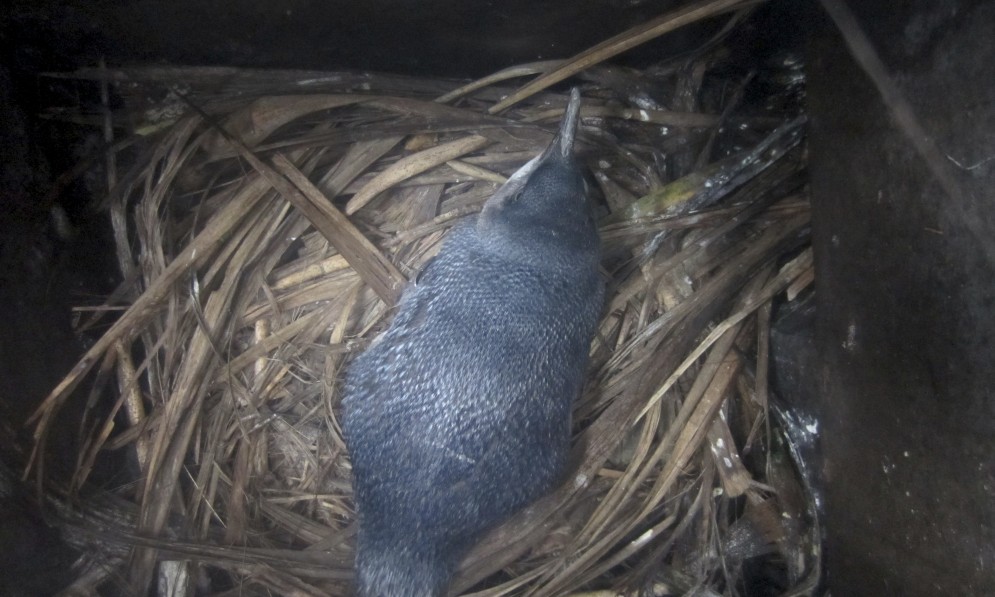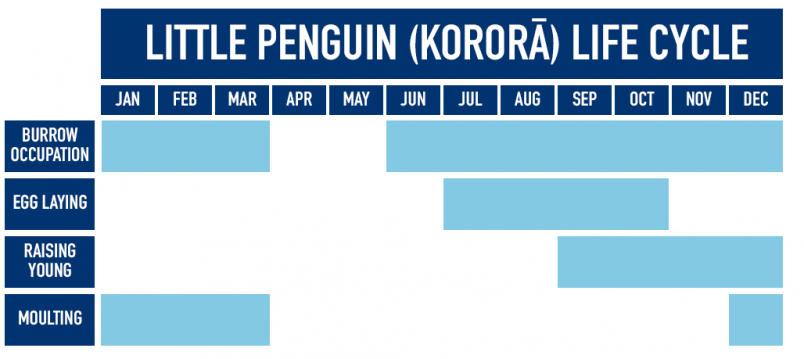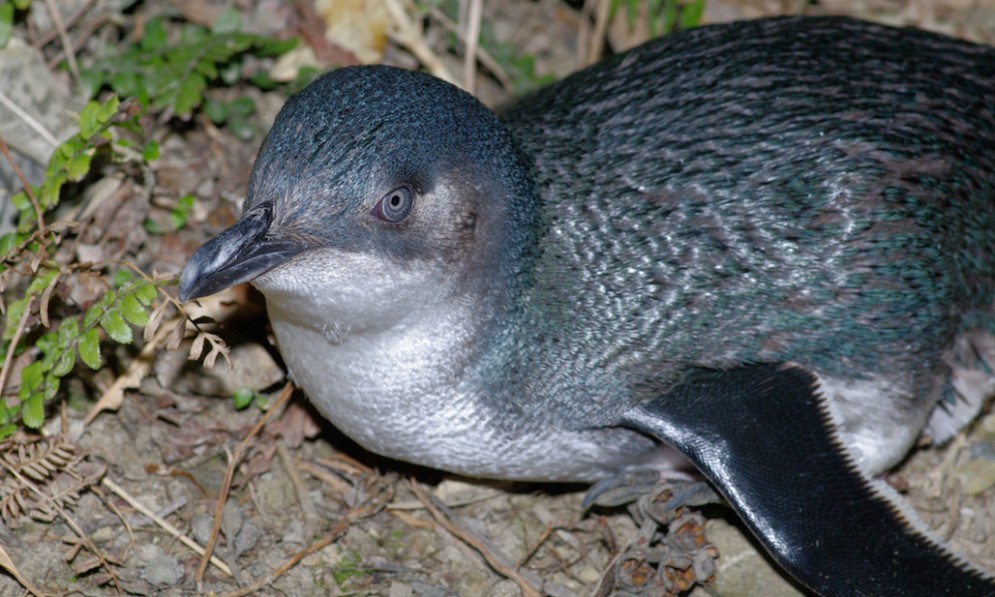Little penguins (kororā) live around all of New Zealand’s coastal areas (except the Sub-Antarctic islands and the Kermadec Islands) and in South Australia and Tasmania.
They are the world’s smallest penguin, standing at only 35-43 cm (just slightly taller than a rugby ball) and weighing slightly over 1kg.
Little Penguins have a slate blue back with a white belly—perfect camouflage for blending in against the lighter water as seen from below and the darker as seen from above.
The birds hunt at sea, feeding on small sardine-sized fish, and may swim up to 25km offshore and up to 70km from their colonies, reaching speeds of 6kph. In fact, their Latin name Eudyptula minor means“good little diver”.

Credit: Luc Hoogenstein
During the breeding season, they generally come to shore at dusk and leave at dawn. Onshore they are often quite noisy, and you may hear their loud screams, wails, trumpeting and deep growls when they come ashore at night.
Their average lifespan is 7 years, but they can live to be over 20 years old. Their world population now stands at about 500,000 breeding pairs but is declining, largely due to human impacts, like urbanisation of coastal areas
Little Penguin colonies are spread all around our coastline. The colonies are small, often less than five nesting pairs, although the largest can be between 20-40 pairs. The penguins may wander up to 1.5km and climb 300m before choosing a nest site.
They commonly nest in dunes, coastal forest, farmland, and rocky areas up to 200m inland. Colonies can be found up to 500m upstream from river mouths – well within common white-baiting zones. Nests are made in burrows, caves and rocky crevices, under tree roots, and in nest boxes. It is not uncommon to see them nesting under holiday homes and houses near the sea. Little Blue Penguins often mate for life (although they have divorce rates similar to humans) and are often faithful to the same nest sites year after year.
The Little Penguin’s Life-cycle
Little penguins can be found on land from June through March. During this time they lay their eggs, attend to their young, and moult. During April and May, they spend large amounts of time at sea feeding in preparation for the next nesting season.

The penguins lay their eggs between July and October. They usually lay a single clutch of two eggs, but occasionally lay two clutches. Eggs are incubated for about 40 days.
Chicks hatch between September and December. When they are first born, the chicks weigh about 35g, and treble their size to one kilogram by the time they’re 8 weeks old!
After the chicks hatch, both parents care for them, remaining at their side until they are about 3 weeks old. The parents continue to attend to their chicks until they are fully grown at 8 weeks, making many trips back and forth to the ocean to bring back food. Once their chicks are independent, the penguins return to sea to stock up on food before moulting.
If you see a scruffy-looking penguin between December and March, don’t assume that it’s ill; it’s likely that it’s just moulting. Little Penguins moult for 2-3 weeks. During this time they cannot swim, making them particularly vulnerable to dogs, cats, and stoats.
The penguins must also fast while moulting because they are unable to go to sea and hunt. In preparation, from December to February, adult penguins double their body weight.
Little penguins can be found on land from June through March. During this time they lay their eggs, attend to their young, and moult. During April and May, they spend large amounts of time at sea feeding in preparation for the next nesting season.

